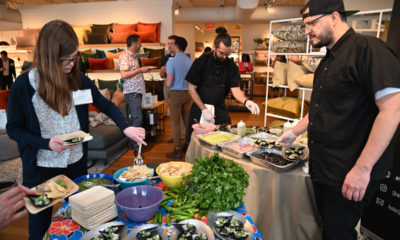Health
Queer youth found creative approaches to self-care during pandemic
From taking a bath to developing new workout routines
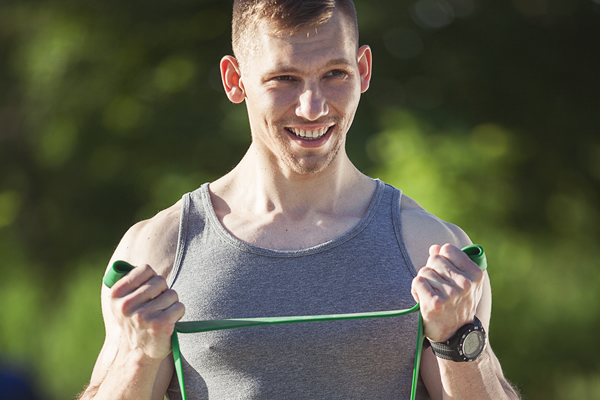
Isolation, whether because of the pandemic, physical or mental health issues, or a combination of those, has affected everyone this year. For LGBTQ youth, already marginalized by society and often lacking support in their own families, it has been especially difficult.
A Trevor Project survey conducted at the end of 2020 found “more than half of transgender and non-binary youth seriously considered suicide.”
In July of 2020, a group of Irish doctors and a representative from a student group called for immediate research and dissemination of self-help resources for young people, stating that “youth, whilst less susceptible to severe COVID-19 infection, is more at risk of the negative psychosocial effects of the pandemic.”
Urban Health Media Project, a D.C.-based nonprofit that helps train high school students in health journalism, surveyed youth about the mental health impacts of the pandemic in April. They wanted to know how LGBTQ youth had been taking care of themselves and about the importance of Pride as society emerged from isolation.
Pandemic life changed the way most people socialize, forcing people to learn how to cope with their own struggles. The concept of “self-care”— practices and methods for maintaining mental and physical health without the aid of the medical community — has become even more important when COVID-19 forced people into lockdown.
But pandemic-era self-care doesn’t look the same for everyone. For some, it’s about taking a bath, taking extra care of their physical health, or developing a new workout routine that doesn’t require a gym.
For many, therapy offers an opportunity to discuss emotions and get feedback and help from a trained professional. Many young people don’t have this option, unfortunately, and COVID has made some reluctant to seek out that type of care.
When therapy or friends are not enough or when they are inaccessible, people have found other ways to release their emotions.
Jada Johnson, a Baltimore writer and social justice advocate who graduated from high school last year, said on the Urban Health Media Project’s “Therapy Thursday” Instagram Live on May 6 that she is considering making more frequent appointments with a therapist. When things get too overwhelming for her, Johnson said she often just does “nothing.” She detaches until she feels strong enough to keep going.
Hot showers also help, she said.
“Hot water, it just relaxes me,” said Johnson. “Like, it just refreshes me, keeps me on the go.”
Radiah Jamil, a rising high school senior at Brooklyn Latin School, who is an LGBTQ ally, uses daily journaling and creative writing: “Writing in general is something I love to do and the activity enhances my quality of life so I like to do all types of writing from creative writing to journalism about any issues and topics on my mind.”
Young Elder, 19, a rap artist and activist from Baltimore, uses music and poetry to cope with the feelings of depression that she has experienced. “It really helped clear my mind and helped me find a different way to put how I was feeling,” she said on UHMP’s May 20 Instagram Live. “Music is how I heal, so it’s a process. So it’s kind of like I’m writing a diary and I’m choosing to share it.”
Teens and young adults surveyed by Urban Health Media Project about self-care also mentioned that favorite songs and movies help them to relax.
Dangers of social media
Turning to social media, however, when feeling anxious or depressed can sometimes add to stress. Social media is not nearly as transparent as some may think; a personal feed can often be just a collection of the best moments of a person’s life, and can sometimes be exaggerated or even fabricated.
Lexi Shepard, 18, of Kokomo, Ind., attested to the impact of social media on her mental health on a May 13 Instagram livestream: “Social media does impact how you view your own accomplishments because it’s very easy to fall into the niche of comparing yourself and what you’ve achieved to what other people are achieving.”
Having just graduated from high school, the college acceptance experience was fresh in her mind. “It’s very easy to sit there and compare and say, ‘wow, I could have done better and I could have done more,’ and have a very negative outlook on it,” she said. “I realized that I needed to be proud of my own accomplishments and realize what’s best for me. I’m making these decisions for myself, not to please people around me.”
Not everyone has that level of perspective and emotional self-awareness, though.
In situations of anxiety or stress, or feeling overwhelmed, the most important thing to do is to acknowledge your emotions and take a moment to yourself, said Calix Vu-Bui, a queer Vietnamese-American licensed therapist for Amwell.
“One of the things I think is so simple is to just tell yourself, or tell someone who’s asking something from you in an anxious moment, ‘I need a moment,’” Vu-Bui said in a May 13 Instagram Livestream organized by UHMP. “How are you going to regulate anything, [or] be able to think and respond to people if you’re not like, ‘wait a second, I’ve gotta breathe.’ And then you actually have to do it!”
Vu-Bui uses a metaphor of a balloon to explain the need to vent and release emotions.
”We’re full of all these emotions and all these things that happen to us… and so all the things [that were] mentioned, from journaling, music, exercise, all these different ways and outlets that we have to just kind of release some tension from that balloon. We’ve got to let some of that air out or we are going to pop.”
Resources for LGBTQ youth
You are not alone. Numerous resources exist for LGBTQ youth. National organizations that provide a full range of support from information and education to individualized care include:
You can call the Trevor Lifeline 24/7/365: 866-488-7386.
They also offer a round-the-clock online confidential chat and a text messaging withTrevor counselors for youth in need. Their website includes resources such as “Protect your space and well-being on Instagram” and “A Coming Out Handbook.”
The National Alliance on Mental Illness also operates a Helpline 800-950-NAMI, or in a crisis text “NAMI” to 741741. They have state affiliates so you can find help wherever you are. You can find your local NAMI by scrolling to the bottom of their “about” page and putting your state into the designated search box. And their “Support and Education” page has information on support groups and even online discussion groups.
The Centers for Disease Control and Prevention has compiled a list of resources for LGBTQ youth, and their educators and school administrators, and their parents and families.
For more localized resources, contact a comprehensive care hospital or a children’s hospital in your region.
The Youth Pride Clinic, for example, provides primary and specialty care services to lesbian, gay, bisexual, transgender and questioning/queer (LGBTQ) young adults between the ages of 12-22 throughout the greater Washington, D.C., region. OR CALL 202-476-5744
Adrian Gibbons graduated from Boston University in May 2021 with a film degree. A trans male, he is an intern with the Urban Health Media Project.
Health
UNAIDS to commemorate Zero Discrimination Day’s 10th anniversary
UN agency urges global action to protect human rights
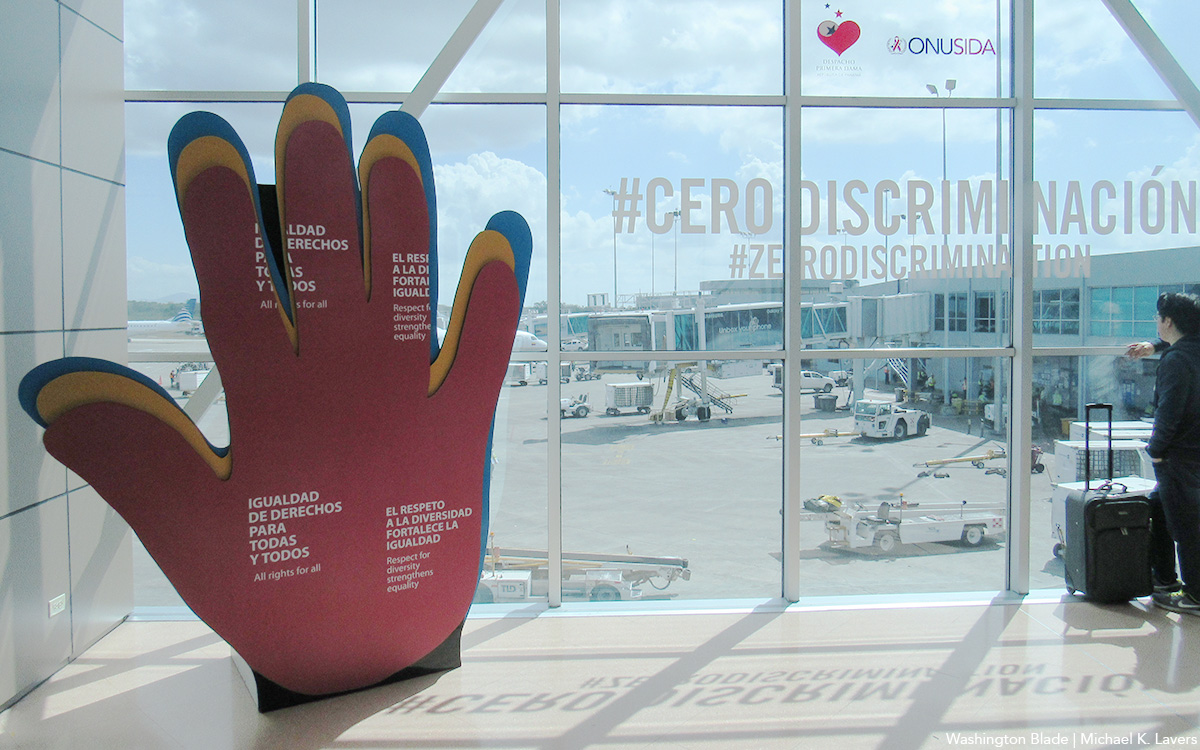
As the world marks the 10th anniversary of Zero Discrimination Day; UNAIDS is sounding the alarm on the increasing threats to human rights, calling for renewed efforts to protect the rights of all individuals as a fundamental step towards ensuring health for everyone.
Established by UNAIDS a decade ago, Zero Discrimination Day aims to promote equality and fairness regardless of gender, age, sexuality, ethnicity or HIV status. The progress achieved over the past years is now in jeopardy, however, due to rising attacks on the rights of women, LGBTQ people and other marginalized communities.
UNAIDS Executive Director Winnie Byanyima emphasized the critical link between protecting human rights and safeguarding public health.
“The attacks on rights are a threat to freedom and democracy and are harmful to health,” she said in a press release. “Stigma and discrimination obstruct HIV prevention, testing, treatment and care and hold back progress towards ending AIDS by 2030. It is only by protecting everyone’s rights that we can protect everyone’s health.”
Despite challenges, there has been notable progress.
At the onset of the AIDS pandemic more than 40 years ago, two-thirds of countries criminalized consensual same-sex sexual relations. They are now decriminalized in two-thirds of countries. An additional 38 countries around the world have pledged to end HIV-related stigma and discrimination, contributing to positive changes that include 50 million more girls attending school compared to 2015.
To sustain and enhance these advancements; UNAIDS urges global support for women’s rights movements, LGBTQ rights, racial justice, economic justice, climate justice and peace initiatives. By standing with communities advocating for their rights, the U.N. aims to reinforce the collective effort towards a more inclusive and equitable world.
Zero Discrimination Day is observed on March 1.
Events and activities that will take place around the world throughout the month will serve as reminders of the essential lesson and call to action: Protecting everyone’s health is synonymous with protecting everyone’s rights.
“Through upholding rights for all, we will be able to achieve the Sustainable Development Goals and secure a safer, fairer, kinder and happier world — for everyone,” said Byanyima.
Health
New CDC report finds transgender women at higher risk for HIV
More than 1,600 people in seven cities surveyed
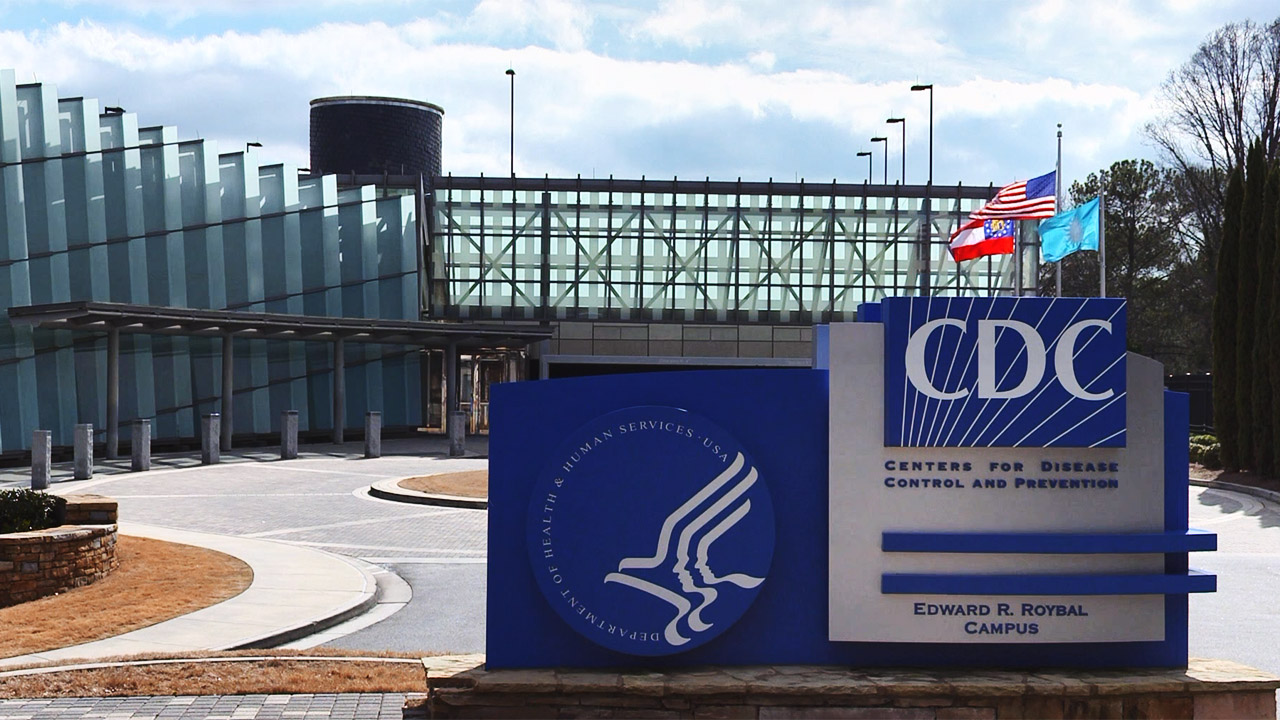
The Centers for Disease Control and Prevention issued a new study report this week that revealed that restricted by employment and housing discrimination and lack of access to needed gender-affirming healthcare for transgender women increasing the risk of contracting HIV.
Researchers reviewed data from a 2019-2020 survey, the National HIV Behavioral Surveillance Among Transgender Women, which found that the demographics of HIV/AIDS have been disproportionally high, especially among Black and Latina trans women, who had experienced employment and housing discrimination coupled with lack of access to gender-affirming healthcare.
The Jan. 25 Morbidity and Mortality Weekly Report was based on data studies of more than 1,600 trans women in seven major urban locales. Participants from Atlanta, Los Angeles, New Orleans, New York, Philadelphia, San Francisco and Seattle were chosen by referrals from people and community-based organizations who knew or were part of the local population of trans women.
The study’s researchers noted: “Employment discrimination occurs at the overlapping nexus of poverty, homelessness, incarceration, health insurance, disability, food insecurity and survival sex work. These issues are interconnected.”
The study stated that trans women’s inability to access quality healthcare, including gender-affirming treatment or access to PrEP, and can expose them to potential incarceration as many turn to “survival sex work” and violence, which increases the risk of contracting HIV.
The study’s author’s pointed out: “When economically marginalized transgender women are refused employment, this refusal cyclically contributes to economic hardships. This analysis …demonstrates the importance of transgender women working and living with dignity and without fear of unfair treatment.”
Health
A Whole New Perspective on Well-Being
The Mather’s team recognizes that everyone’s wellness journey is completely unique to their life experiences and influences.

It’s easy to spot the distinctive, elegant silhouette of The Mather, a Life Plan Community for those 62+ opening this spring in Tysons, Virginia. What is not apparent to the naked eye is The Mather’s unique wellness philosophy, which is literally built into the community.
The Mather’s team recognizes that everyone’s wellness journey is completely unique to their life experiences and influences.
Nature is one of the important factors that contribute to well-being. So The Mather is incorporating biophilic design—a design approach to facilitate access to nature or things that replicate natural patterns. This can include interior spaces with sightlines to a garden, choosing natural wood and stone as interior materials, or incorporating fragrant flowers and plants indoors to spark memories and provide tactile opportunities such as gardening.
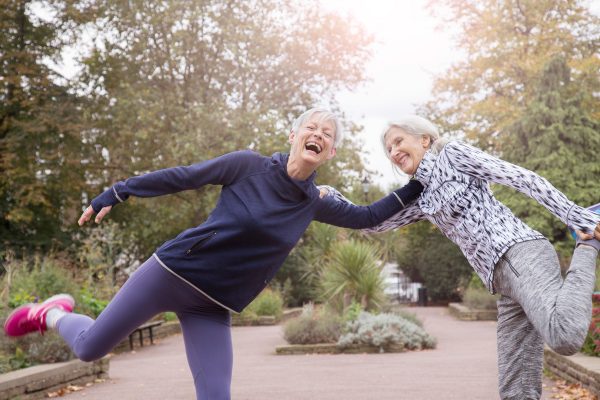
“Providing biophilic design within interior settings connects residents to the natural world,” says Mary Leary, CEO and President of Mather, the organization behind The Mather. “Research shows that a connection to nature provides positive benefits to mental states and overall well-being. At The Mather, biophilic design is the intersection of buildings and programs with nature in an urban setting.”
“The Mather is attracting a diverse group of older adults,” says Mary. “As a result, we aim to incorporate wellness practices from around the world, including Wyda movement theory of the Celtic Druids, which helps people achieve harmony with nature and contentment through mindfulness.” This holistic regenerative approach is similar to Qi Gong and yoga, while born in a different part of the world. Mather Institute has a special focus on mindfulness to support older adults’ practice of present moment awareness, which can lead to increased overall well-being, compassion, and joy.
A very different example of a wellness offering at The Mather is the Gharieni Welnamis spa wave bed, which uses computer-controlled vibrational therapy and audio frequencies to train the brain to relax. “The bed increases mindfulness, concentration, and creativity—all of which support our mission of creating Ways to Age Well,SM” says Mary.
These and other personalized ways to wellness will ensure that residents of The Mather can choose from seemingly countless ways to focus on their well-being. In other words, the sky’s the limit!
-

 District of Columbia3 days ago
District of Columbia3 days agoCatching up with the asexuals and aromantics of D.C.
-

 South America3 days ago
South America3 days agoArgentina government dismisses transgender public sector employees
-

 Maine4 days ago
Maine4 days agoMaine governor signs transgender, abortion sanctuary bill into law
-

 District of Columbia4 days ago
District of Columbia4 days agoBowser budget proposal calls for $5.25 million for 2025 World Pride

